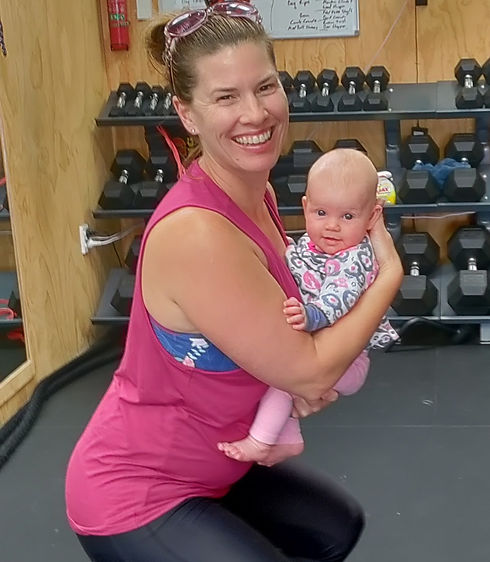
Energised
Ladies
Pregnancy, Postnatal &
Beyond Exercise Specialist
Postnatal Recovery & Exercise
If you've recently had your baby and starting to feel ready to take the steps to effectively recover and restore the function of your body, maybe even have a goal to return to regular exercise? But you're either not aware or not sure how to safely and effectively reconnect with your core and pelvic floor muscles so they function well for your daily life?
Pregnancy and birth are one of the most amazing things our bodies can do, it is not to be underestimated and unfortunately, society does this.
We are often expected to jump straight back into normal life, but your body might not be feeling up to it, is it left feeling weak, achy, tired, and disconnected and you don't know where to start?
Jo and her programs are here to support you to reconnect to your body and reintroduce movement and exercise safely and effectively for your core, pelvic floor, and entire body to become fully functional, strong, and healthy again.

Services
There are three options to learn from and work with Jo. Choose an option that best suits you to support your recovery.

During Pregnancy significant changes happen to your body on both a physical and hormonal level to accommodate your growing baby, then birth again is another huge event for your body which you need to allow your body time to heal and recover from.
Think about any other form of injury/and/or surgery, recovery from this can take from days to weeks to months, your body has been through a lot of changes over a long period, and therefore you should consider and keep this in mind for your recovery and rehabilitation.
Every woman's experience is different, however, so you need to ‘Listen to your body' and take it at a pace that suits you.
Racing through recovery might put you at risk for long-term injuries.
At about the six to eight weeks postnatal (or after) Jo highly recommends you book yourself a appointment with a Womens Pelvic Floor Physio for a physical assessment and customised management plan if needed. You may or may not have symptoms of pelvic floor dysfunction and only by having a physical assessment by a trained professional will confirm this.
It is well worth getting yourself checked that everything is functioning effectively down there especially if you have symptoms, or are wanting to progress back into more intense exercise such as impact sports or heavy weightlifting that has the potential to leave you with long term pelvic floor dysfunction if not progressed correctly for your situation.
There is plenty of ways to manage pelvic floor symptoms, the best way being to prevent it by taking the time to recover safely and progressively after pregnancy and birth. This includes mothers that have had c-sections, be sure to download your free guide to C-section recovery and scar tissue massage above.

Get in tune with your body
Que; The four P's
You may have heard the phrase 'Listen to your body' before, but what does this mean in terms of postnatal recovery and exercise?
When you start adding more intensity to your daily movement or exercise (from at least that six week mark), keep an eye out for these symptoms as a guide to let you know you might be progressing too fast for your current ability.
Peeing
Does an exercise cause you to accidentally leak urine or cause you to need to stop and run to the toilet?
Pressure
Do you feel a bulging or heavy sensation in your pelvic floor/groin area that doesn’t feel normal at any time? This could indicate a pelvic organ prolapse.
Pain
Does an exercise cause you pain anywhere in your body such as pelvic or back pain?
Peaking
Do you notice a doming or peaking down the centre of your belly above and/or below you belly button, this is likely a sign of too much pressure being placed on your core, the movement/exercise you are performing is too challenging currently.
If an exercise aggravates any of these P’s, stop and reconsider your technique, modify to an easier option or you may have to temporarily stop doing this exercise until your strength improves. Pushing through despite unwanted symptoms may symptoms them worse or inhibit long term recovery. Do not ignore these symptoms.
If any of these symptoms persist, be sure to see your pelvic health physio for further assessment and guidance.
If an exercise aggravates any of these P's, stop and reconsider your technique. Modify to an easier/lighter option of you may have to temporarily stop doing this exercise until your strength improves. Pushing through despite unwanted symptoms will likely make them worse or inhibit long term recovery.
If any of these symptoms persist, they are common but not normal, please get in touch with me to discuss further of make an appointment with your local pelvic floor women's healthy physio.








